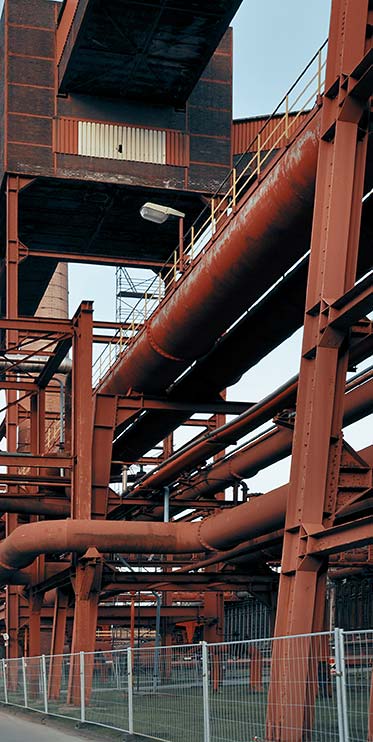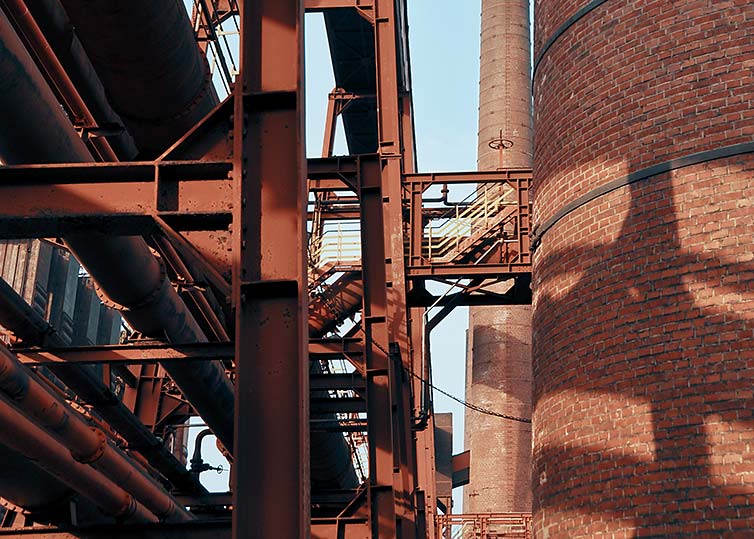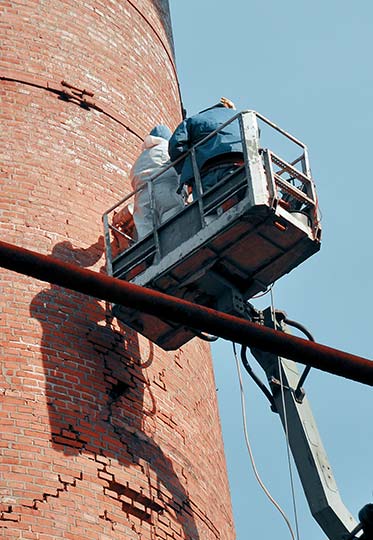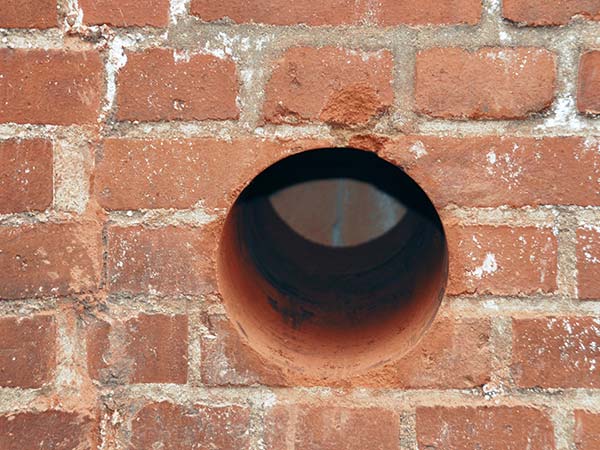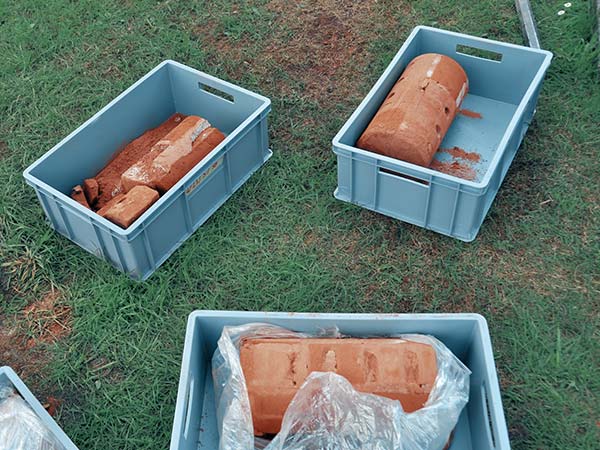Analysis of structural condition
Chimneys of coking plant Zollverein Essen
The coal mine and former coking plant at Zollverein were declared UNESCO World Heritage sites in 2001. In 1998 the Foundation for the Preservation of Historical Industrial Sites and Cultural History took the coking plant under its protection. The foundation takes care of the preservation and proper use of the building and the technical facilities of this industrial historical site.
The coking plant was constructed in connection with the central shaft system at Zollverein XII in the years 1957 to 1961. The design of the coking plant was taken on by the industrial architect Fritz Schupp. The first official coking oven was fired on September 12th, 1961. In 1961 the coking plant had more than 192 coking ovens with a capacity of 5000 t of coke daily. In 1973 the number of ovens was increased from 192 to 304 end the output to 8.600 t of coke daily. In the meantime the plant employed up to 10.00 people. (Source: www.zollverein.de/info/geschichte)
The Challenge
Among the entire facility falling under federal protection as historical monuments at the Zollverein foundation are the 6 brick chimneys of the coking plant that are no longer in operation. The structural condition of the chimneys was to be analysed and suitable measures for renovating them were to be formulated.
Chimneys 2 through 5 were constructed at the end of the 1950s. They are 80.00 m high. Chimneys e 1 and 6 were built in the 1970s and are 98.00 m high. Due to the poor condition of the chimneys it was not possible to inspect them on the catwalks. Coal conveyor systems and distributor towers run parallel to the chimneys and make access more difficult.
The Solution
To inspect the structural condition of the chimneys, 4 core samples for each level in 7 to 10 levels were taken on 3 chimneys using a dry drilling procedure (the levels ranging from ca. + 0.30 m to 98.00 m), in the existing brickwork, which had a thickness of from 0.24 to 0.90 m. Since it was not possible to walk on the catwalks, it was necessary to use two heavy mobile cranes (220 t and 450 t). The test bores were then done using workman baskets.
The material samples were tested by an expert, photographically documented and examined in a laboratory.
Other services in the context of status analysis included:
- Checking the steel spot-repairs to the brick work
- Checking the light installations
- Checking the covers of the openings
- Interiors inspection of a chimney
- Removal of loose joint and stone material
The knowledge gains is now being evaluated and will provide the basis for a renovation concept.
Contact person
Solutions
Services
- Status analysis
- Material analysis
- Assessment
- Renovation concept
- Building organisation
- Execution planning
- Construction supervision
Photos
- Astrid Theisen
